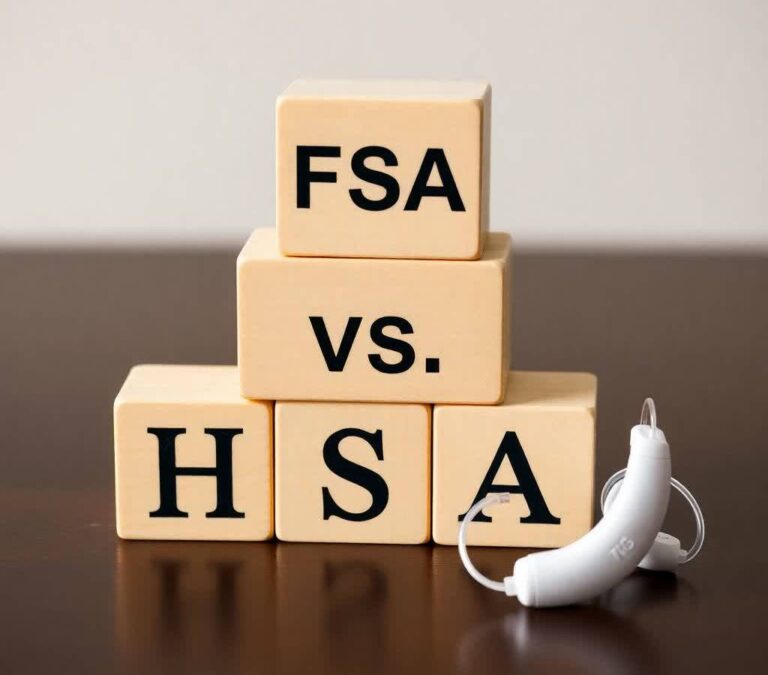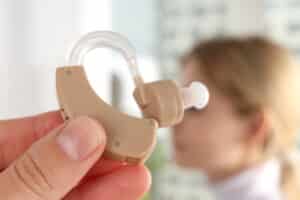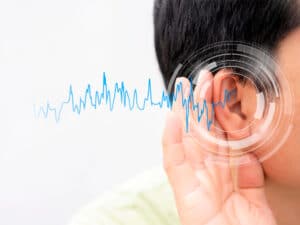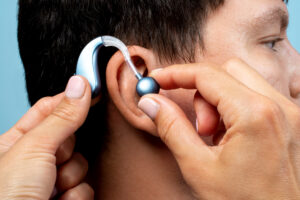About 48 million Americans live with some degree of hearing loss, and modern hearing aids routinely cost $3,000 – $6,000 per pair, often paid out-of-pocket because Medicare and many commercial plans label them “elective.” Two tax-advantaged accounts, Health Savings Accounts (HSAs) and Health Flexible Spending Accounts (FSAs), can bridge much of the gap if you know how each program works and how to time a purchase. This article lays out the basics and shows you ways to use either type of account to secure high-quality devices from a credentialed audiologist.
HSAs in a Nutshell
HSA Eligibility and Core Rules
- You must be covered by a qualifying High-Deductible Health Plan (HDHP).
- For 2025, the minimum deductible is $1,650 for self-only coverage and $3,300 for family coverage.
- You may contribute up to $4,300 if you’re single or $8,550 for a family, with an extra $1,000 catch-up once you reach age 55.
- Contributions go in pre-tax, grow tax-deferred, and come out tax-free when used for qualified medical expenses, including hearing aids.
- Unused funds roll over forever and can be invested in mutual funds or ETFs.
Why HSAs Shine for Hearing Aids
- Multi-Year Saving Power: Because balances never expire, you can bank several years of contributions and then make a single large withdrawal when you’re ready for premium devices.
- Triple Tax Advantage: You avoid tax on the way in, on any investment growth, and on the distribution (so long as it’s for a qualified expense).
- Retirement Flexibility: After age 65 you may treat an HSA like a traditional IRA for non-medical withdrawals (ordinary income tax applies), while medical withdrawals remain tax-free.
Practical Steps
- Contribute through payroll to capture any employer match and to sidestep FICA taxes.
- Once your cash threshold is met, invest the excess so compound growth outpaces hearing-aid price inflation.
- Keep every receipt. If you pay out-of-pocket today, you can reimburse yourself years later, letting the money grow in the meantime.
FSAs in a Nutshell
FSA Eligibility and Core Rules
- Offered only through employers; the self-employed cannot open one.
- You may elect up to $3,300 in 2025 (spouses can each elect, effectively doubling runway).
- Contributions escape federal income tax and payroll tax.
- The entire annual election is available on the first day of the plan year, handy for large early-year expenses.
- Most FSAs follow a “use-it-or-lose-it” rule. Plans may offer one of two relief valves:
- A carry-over of up to $640 into the next plan year, or
- A 2½-month grace period.
- Leaving your employer mid-year usually cuts off access unless you choose COBRA.
Why FSAs Still Help
- Immediate liquidity means you can schedule a fitting in January even though payroll deductions will occur through December.
- Payroll tax savings produce a slightly higher benefit than an HSA contribution made outside of payroll.
Pitfalls to Avoid
- Forfeiture risk if you delay the purchase past plan deadlines.
- Job changes can nullify access to unspent funds unless you pay to continue the plan.
Are Hearing Aids a Qualified Expense? (Yes.)
The IRS explicitly lists hearing aids, batteries, maintenance, and diagnostic evaluations as qualified medical expenses for both HSAs and FSAs. That means:
- You can swipe an HSA debit card at your audiology clinic.
- You can submit an FSA claim with the paid invoice.
- Ear molds, repair fees, and physician-prescribed accessories also qualify.
Paying for Hearing Aids with an HSA
- Forecast the Cost: Ask the clinic for a written quote that bundles devices, fitting, follow-up adjustments, and real-ear verification. Comprehensive packages often run $4,500 – $7,500.
- Check Your Balance: Combine existing funds with current-year contributions if needed. Remember the 2025 caps.
- Choose Your Funding Method: Pay directly from the HSA card, or pay cash/credit and reimburse yourself later (useful if you want reward points).
- Document Everything: Keep the audiologist’s invoice, hearing-test results, and proof of payment.
- Plan Upgrades Early: Because balances roll and grow, you can save for the inevitable tech refresh in four to six years.
Paying for Hearing Aids with an FSA
- Elect Enough At Open Enrollment: If you know you’ll buy in 2025, set your election close to the $3,300 limit; married couples can double that by each electing the full limit.
- Verify Plan Deadlines: Determine whether your plan offers carry-over dollars or a grace period, and mark the exact cutoff dates.
- Schedule Promptly: The full election is available on day one; you can buy in February and repay the plan via payroll deductions all year.
- File Claims Quickly: Plans often require receipts within 90 days of the plan year-end or grace-period close.
- Layer Benefits: If your health plan covers part of the cost, have insurance pay first, then claim the remainder from the FSA.
HSA vs. FSA: Quick Comparison for Hearing Care
- Eligibility: HSAs require an HDHP; FSAs do not.
- Contribution Ceiling: HSAs allow higher family limits and age-55 catch-ups.
- Rollover: HSA funds never expire; FSA funds may.
- Investment Growth: Only HSAs allow tax-deferred investing.
- Payroll-Tax Advantage: Both accounts enjoy it when funded via payroll, but FSAs always avoid FICA because they cannot be funded outside payroll.
- Liquidity: FSAs deliver day-one access to the full election, which can be critical for an early-year purchase.
If you already have an HSA-compatible plan, maxing the HSA offers unmatched flexibility and lifetime tax savings. If your employer offers only an FSA, you can still shave thousands off the bill, as long as you respect the deadlines.
Real-World Hearing Aid HSA and FSA Scenarios
The Planner: Jordan, 45, contributes the individual HSA maximum and invests half. By year four, his HSA holds $15,000, more than enough for premium rechargeable hearing aids, and a balance sufficient for future service visits.
The Young Family: The Martins, with two kids, expect new hearing aids for Dad in the fall. They stack the family HSA max ($8,550) and Mom’s FSA max ($3,300), sheltering $11,850 from tax and trimming roughly $3,500 in combined federal and payroll taxes on a $6,500 purchase.
The FSA Sprint: Felicia’s employer offers only an FSA. She schedules her fitting in February, spends the full $3,300 up front, and covers the remainder with a manufacturer rebate, zero forfeiture risk because the expense lands within the same plan year.
Tips to Maximize Your HSA or FSA Benefit
- Plan During Open Enrollment: Price devices beforehand so you can set accurate elections.
- Ask about insurance discounts: Some commercial plans reimburse part of the cost if you use an in-network audiologist.
- Keep digital receipts: The IRS can audit HSA usage years later.
- Budget for batteries and accessories: Expect $50 – $150 per year; those items are HSA/FSA-eligible.
- Stack promotions: Manufacturer coupons can be combined with tax-advantaged dollars.
- Mind state taxes: A handful of states tax HSA contributions; verify your local rules.
- Avoid self-fitting: Over-the-counter devices lack precise programming and professional follow-up.
Ready to Purchase Your Hearing Aid With an HSA or FSA?
Take five minutes today to call your benefits administrator and confirm:
- Your 2025 HSA or FSA contribution window and limits
- Whether your health plan offers any direct hearing-aid coverage
- The documentation they require for reimbursement
Now that you have the facts, book a comprehensive hearing evaluation with a qualified audiologist. If you live or work near White Plains, NY, Dr. Emily and the team at Listen Hear Diagnostics are ready to guide you from testing through fitting and lifetime follow-up care. Combining professional expertise with your tax-advantaged dollars is the smartest, most cost-effective pathway to better hearing. Speak with your insurance provider and schedule your consultation today, your future hearing depends on it.










